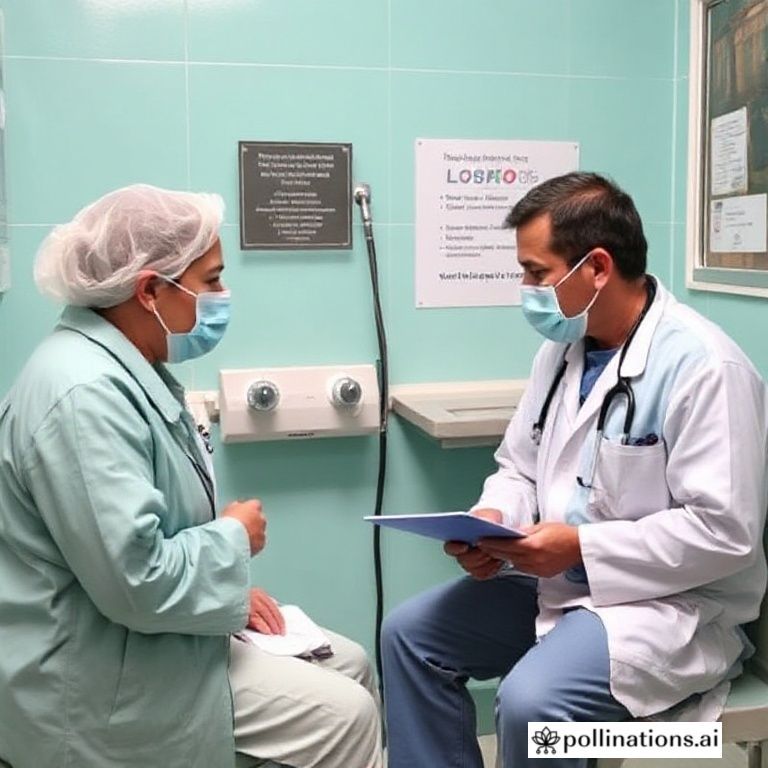Visiting a doctor in a foreign country can be daunting, especially when there’s a language barrier. If you’re living in or traveling to Mexico, understanding some basic Spanish phrases and knowing what to expect during a doctor’s appointment can significantly ease your anxiety and ensure you receive the best possible care. This guide will provide you with essential vocabulary, common questions, and helpful tips for navigating the Mexican healthcare system confidently.
Whether you’re seeking routine medical care or dealing with an unexpected illness, being prepared with the right language tools and cultural awareness will empower you to communicate effectively with medical professionals and advocate for your health needs. Let’s dive into the world of Spanish medical vocabulary and practical phrases to make your next doctor’s visit in Mexico a smoother, more positive experience.
Essential Spanish Vocabulary for the Doctor’s Office
Before you even step into the doctor’s office, familiarizing yourself with key Spanish words and phrases related to healthcare is crucial. Here’s a breakdown of essential vocabulary to get you started:
- El médico/La médica: Doctor (male/female)
- El consultorio: Doctor’s office
- La cita: Appointment
- El seguro médico: Health insurance
- La receta: Prescription
- La enfermedad: Illness/Disease
- El síntoma: Symptom
- El dolor: Pain
- La fiebre: Fever
- La alergia: Allergy
- La medicina/El medicamento: Medicine/Medication
- La enfermera/El enfermero: Nurse (female/male)
Making an Appointment and Checking In
When calling to make an appointment or arriving at the doctor’s office, these phrases will be helpful:
Making the Appointment:
- “Quisiera hacer una cita con el médico, por favor.” (“I would like to make an appointment with the doctor, please.”)
- “¿Tiene alguna cita disponible para [día]?” (“Do you have any appointments available for [day]?”)
- “¿Cuál es el costo de la consulta?” (“What is the cost of the consultation?”)
Checking In:
- “Tengo una cita con el Dr./Dra. [Apellido].” (“I have an appointment with Dr. [Last Name].”)
- “Mi nombre es [Tu nombre].” (“My name is [Your name].”)
- “Tengo seguro médico.” (“I have health insurance.”)
- “¿Puedo llenar este formulario en inglés?” (“Can I fill out this form in English?”)
Describing Your Symptoms
Clearly communicating your symptoms is vital for accurate diagnosis and treatment. Here are some phrases to help you describe how you’re feeling:
Common Phrases:
- “Me siento mal.” (“I feel sick.”)
- “Tengo dolor de [parte del cuerpo].” (“I have pain in my [body part].”)
- “Tengo fiebre.” (“I have a fever.”)
- “Tengo tos.” (“I have a cough.”)
- “Tengo náuseas.” (“I have nausea.”)
- “Tengo diarrea.” (“I have diarrhea.”)
- “Estoy mareado/a.” (“I am dizzy.”)
- “Me duele la cabeza.” (“My head hurts.”)
- “Me duele el estómago.” (“My stomach hurts.”)
Answering the Doctor’s Questions:
- “¿Dónde le duele?” (“Where does it hurt?”) – “Me duele aquí.” (“It hurts here.”)
- “¿Desde cuándo tiene este dolor/síntoma?” (“Since when have you had this pain/symptom?”) – “Desde hace [tiempo].” (“Since [time].”)
- “¿Tiene alguna alergia?” (“Do you have any allergies?”) – “Soy alérgico/a a [alergia].” (“I am allergic to [allergy].”)
- “¿Está tomando algún medicamento?” (“Are you taking any medication?”) – “Sí, tomo [medicamento].” (“Yes, I take [medication].”) or “No, no tomo ningún medicamento.” (“No, I don’t take any medication.”)
Understanding the Doctor’s Instructions
After the examination, the doctor will provide instructions and possibly a prescription. Make sure you understand everything clearly. Don’t hesitate to ask for clarification.
Key Phrases:
- “¿Cómo debo tomar este medicamento?” (“How should I take this medication?”)
- “¿Cuántas veces al día?” (“How many times a day?”)
- “¿Por cuánto tiempo?” (“For how long?”)
- “¿Hay efectos secundarios?” (“Are there any side effects?”)
- “¿Necesito una receta?” (“Do I need a prescription?”)
- “¿Cuándo debo volver?” (“When should I come back?”)
- “¿Puede escribir eso, por favor?” (“Can you write that down, please?”)
Tips for a Successful Doctor’s Visit
- Prepare a list of your symptoms: Write down everything you want to discuss with the doctor in advance.
- Bring a translator if needed: If you’re not confident in your Spanish, consider bringing a friend or using a professional translator.
- Write down important information: Take notes during the consultation, especially regarding medication instructions.
- Don’t be afraid to ask questions: It’s crucial to understand everything the doctor tells you.
- Be patient and respectful: Healthcare practices may differ from your home country, so be open-minded and respectful of the local customs.
Conclusion
Navigating a doctor’s appointment in Spanish can feel challenging, but with preparation and the right vocabulary, you can effectively communicate your health needs and receive the care you deserve. By learning essential phrases, practicing your pronunciation, and being prepared to ask questions, you’ll feel more confident and in control during your medical visits in Mexico. Remember, your health is a priority, and effective communication is key to ensuring the best possible outcome.
If you found this guide helpful, share it with your friends and fellow travelers! And don’t forget to check out our other articles on living and thriving in Mexico.
IMAGE: A brightly lit, modern doctor’s office in Mexico. A friendly female doctor in a white coat smiles reassuringly at a patient (male) who is holding a notepad. The scene is warm and inviting, conveying a sense of trust and competence. The color palette includes soft blues, greens, and whites to create a calming atmosphere. A Mexican flag is subtly displayed in the background.


